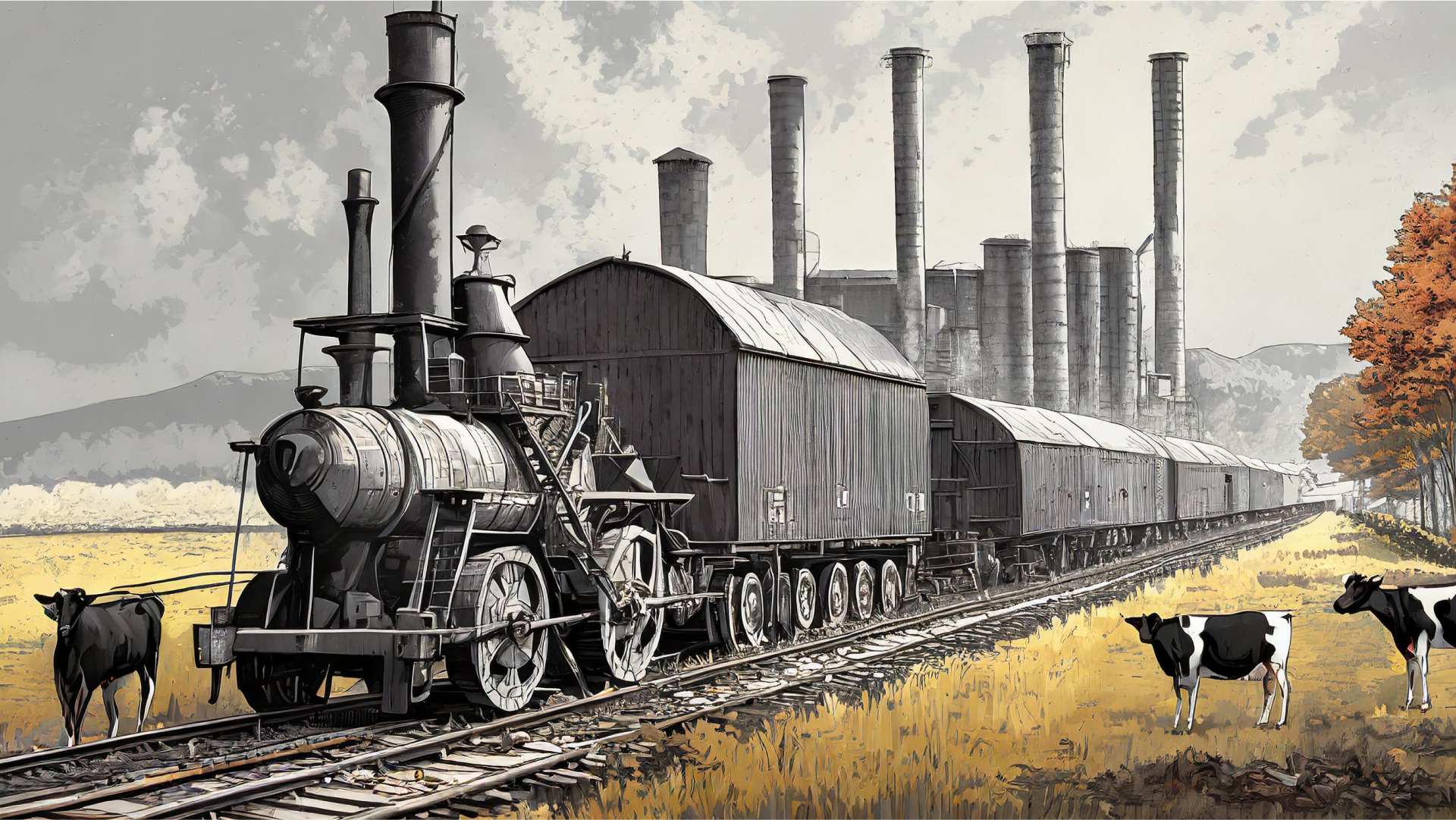Have you ever considered that the Scriptures provide the first written record of livestock transportation? In the Old Testament, Noah’s Ark required meticulous animal counting to ensure no species was left behind. Did he succeed? We may never know, but today, with the aid of AI, we have far more tools at our disposal than our ancestors did. How did we journey from those early days to AGRI-FOOD.AI?

Ancient Times
In ancient Egypt, animals were essential for agriculture and religious sacrifices. As early as 5000 BC, boats carried livestock such as cattle, sheep, and goats along the Nile River. The Egyptians developed techniques to secure animals on boats to prevent them from falling overboard or becoming too stressed. Historical records, such as tomb paintings and hieroglyphs, depict these activities.
The Greeks and Romans advanced maritime transport, including the shipment of livestock. Roman livestock ships, known as corbitae, had reinforced hulls and decks to accommodate the weight and movement of animals. They also developed feeding and watering systems to sustain animals on longer journeys. Livestock markets were common in Roman ports, where animals from various regions were traded.
Middle Ages
During the Middle Ages, more structured trade networks emerged. The Hanseatic League, a commercial and defensive confederation of merchant guilds and market towns in Northwestern and Central Europe, played a significant role in the transportation of livestock. Ships were designed with lower decks specifically for animals, allowing for better organization and care during transit.
The Silk Road facilitated the exchange of various livestock breeds, enhancing genetic diversity and agricultural practices across continents. The introduction of Arabian horses to Europe profoundly impacted European cavalry and farming techniques.
European explorers began transporting livestock across the Atlantic during the Age of Exploration. In 1493, Christopher Columbus’s second voyage included horses, cattle, sheep, and pigs to the Caribbean. This marked the beginning of the transcontinental livestock trade. The first sheep and cattle arrived in Australia with the First Fleet in 1788, initiating sheep farming in the region.
Industrial Revolution
The Industrial Revolution significantly impacted livestock transport. Steamships, such as those operated by the Cunard Line, could transport large numbers of animals across the Atlantic with reduced travel time and lower mortality rates. The introduction of railways enabled the efficient movement of livestock from rural areas to urban markets, drastically reducing the time animals spent in transit.
Refrigeration technology, developed in the late 19th century, allowed for the shipment of frozen meat, reducing the need to transport live animals over long distances. This led to the growth of meatpacking centers in cities like Chicago, which became hubs for the meat industry.

Modern Times
Today’s livestock transport involves highly specialized equipment and protocols. Livestock carriers used in maritime transport have multiple decks with ventilation, temperature control, and waste management systems. Air transport of high-value animals, such as racehorses and breeding stock, is conducted in specially designed crates that ensure comfort and safety.
Regulations at both national and international levels ensure the humane treatment of animals during transport. The World Organisation for Animal Health (OIE) provides guidelines on the welfare of animals during transport, covering aspects such as handling, loading, unloading, and journey planning.
Ethical considerations have led to increased scrutiny of livestock transport practices. Organizations like the RSPCA and PETA advocate for stricter regulations and better enforcement to protect animals from inhumane treatment. Advances in technology, such as GPS tracking and real-time monitoring, help improve the oversight of animal welfare during transport.
In the early days, the success of a voyage was measured by the percentage of animals that survived the journey. High mortality rates were common due to inadequate conditions on board, such as poor ventilation, insufficient feed and water, and lack of proper care. In the 19th century, a mortality rate of around 10% to 15% was often considered acceptable. Today, acceptable mortality rates are much lower—under 1% for long-haul voyages. High mortality rates can trigger investigations and lead to suspensions or revocations of export licenses.

On the AGRI-FOOD.AI podcast, you can gain insights into modern AI-supported livestock methods from industry insiders. Australia’s service provider and research body for the Australian livestock export industry, LiveCorp, will be featured. Nick Baker, Research, Development & Extension Manager of the Australian Livestock Export Corporation Ltd, and our AGRI-FOOD.AI expert, Gergo Boromisza, will share their experiences.
LiveCorp works closely with exporters and other stakeholders to continuously improve performance in animal health and welfare, supply chain efficiency, and market access. The majority of LiveCorp’s research, development, and extension activity is carried out through the Livestock Export Program, which is jointly funded by Meat & Livestock Australia, the RDC for livestock farmers. Tune in with us—at AGRI-FOOD.AI, The Future is Now.!
And don’t forget to stick with us week after week!. Connect with us online fill out the form on our website, and we’ll get back to you ASAP. Send us your questions, share your experiences, and we’ll turn them into podcast with answers and solutions from the world of IT and AI technologies. Catch us on Spotify, Apple podcasts, and YouTube. Subscribe to our channel to be the first to know when a new episode drops.
 2024-07-19
2024-07-19  PODCAST
PODCAST
 share
share


 Our website uses cookies
Our website uses cookies